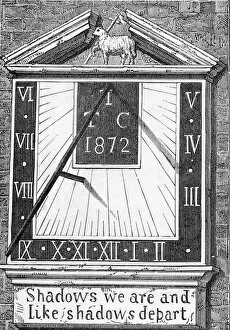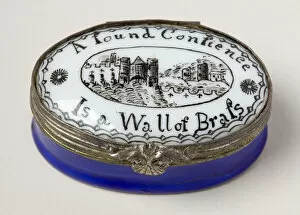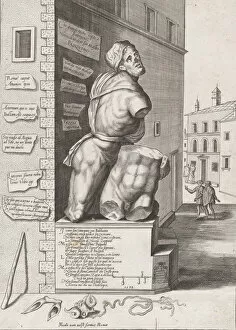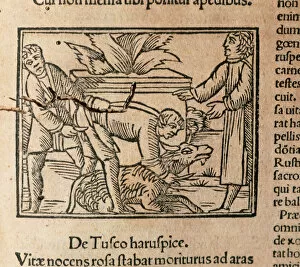Epigram Collection
"Capturing Life's Ironies: Epigram, the Art of Wit and Satire" In a world where contradictions thrive, an epigram unveils hidden truths with a touch of humor
For sale as Licensed Images
Choose your image, Select your licence and Download the media
"Capturing Life's Ironies: Epigram, the Art of Wit and Satire" In a world where contradictions thrive, an epigram unveils hidden truths with a touch of humor. Just like the audacious man allowing a stranger to kiss his wife, it challenges societal norms and tickles our imagination. As the sun-dial in Middle Temple engraving reminds us of fleeting moments, so do Oscar Wilde's words in "The Importance of Being Earnest. " His play dances on the fine line between reality and absurdity, leaving us pondering life's paradoxes. A hand-warmer disguised as a book from 1672 speaks volumes about human ingenuity. Crafted from earthenware and tin-glazed delftware, it warms both body and soul while reminding us that beauty lies even in practical objects. "As the Salamander lives in fire, so also the Stone, " whispers ancient wisdom. This enigmatic phrase invites contemplation on resilience amidst adversity – just like an oval patch box with its delicate white porcelain lid adorned with enamel artistry. Glimpses into history reveal Pasquin's statue standing tall within Cardinal Ursino's house. Published after 1582, this symbol of political satire embodies Epigram's power to challenge authority through clever wordplay or visual representation. From Pompeii emerges a fresco depicting a satyr embracing a nymph; their passionate embrace captures desire entangled with nature itself. Such provocative imagery echoes Martial's timeless epigrams that explore love, lust, and human folly. An eagle soars high above mountainscapes - majestic yet fierce - embodying Martial’s sharp wit that cuts through pretense. Through his poetic verses engraved upon stone tablets for eternity to admire or critique humanity’s follies Within Speculum Romanae Magnificentiae lies another glimpse at Pasquin’s statue residing within Cardinal Ursino’s house. This artistic treasure transports us back to 1550, where satire thrived and Epigram found its voice.











